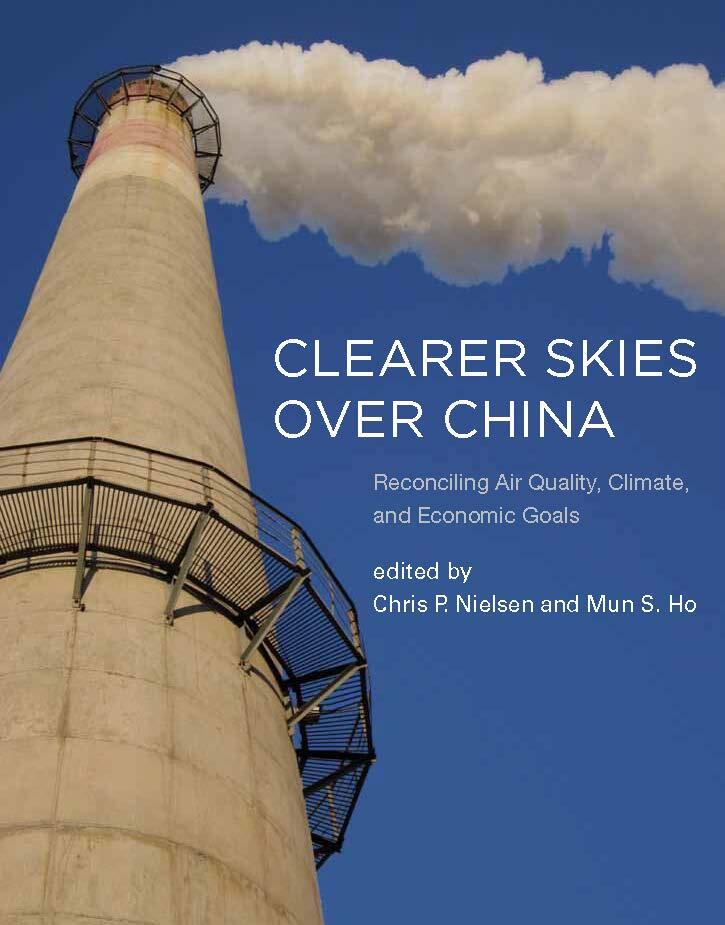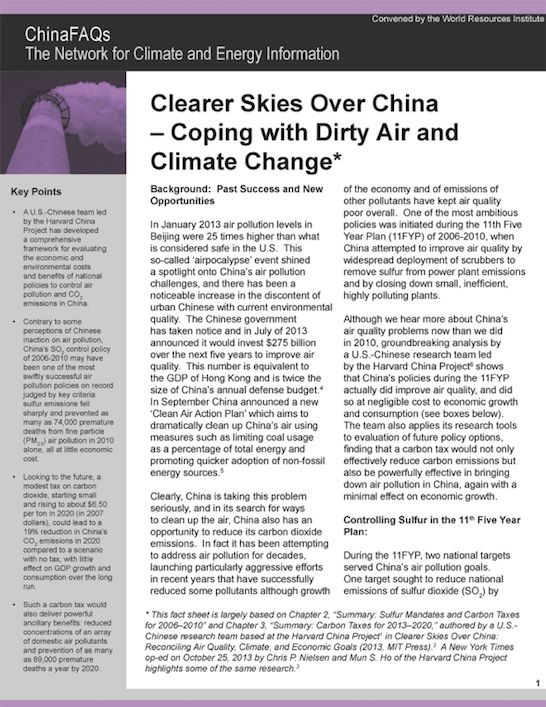 This multi-component research initiative was led by Harvard-China Project researchers at Harvard, Tsinghua University, and Nanjing University. The program evaluated the economic and environmental costs and benefits of national policies to control air pollution and CO2 emissions in China, using a comprehensive interdisciplinary modeling framework. The results and policy conclusions of the assessment are presented in Clearer Skies Over China: Reconciling Air Quality, Climate, and Economic Goals (Nielsen and Ho 2013, MIT Press).
This multi-component research initiative was led by Harvard-China Project researchers at Harvard, Tsinghua University, and Nanjing University. The program evaluated the economic and environmental costs and benefits of national policies to control air pollution and CO2 emissions in China, using a comprehensive interdisciplinary modeling framework. The results and policy conclusions of the assessment are presented in Clearer Skies Over China: Reconciling Air Quality, Climate, and Economic Goals (Nielsen and Ho 2013, MIT Press).
The Framework
In Clearer Skies Over China, China Project economists, engineers, atmospheric scientists, and health scientists integrated the economics-engineering-health framework developed in a prior book by the Project, Clearing the Air, with its separately developed GEOS-Chem atmospheric model of China. This long-intended Project integration was possible due to advances in the resolution of national emission inventories by researchers originally from Tsinghua U., who improved inventories and linked them together as Harvard postdocs and now continue to contribute to the China Project from home institutions in China. The improved spatial and sector resolution of emission inventories made the linking of a sector-based economic model and a spatially-resolved atmospheric model feasible. The emission inventory research is described here.
The result is an advance in understanding the full atmospheric and related effects of emission control and energy policies shaping the Chinese economy. This model integration allows the team to better quantify the effects of complex secondary pollutants like ozone and sulfates on public health, agricultural productivity, and the economy. The multi-disciplinary team first completed assessment of two policies using the newly comprehensive framework, looking backwards to the years 2006-2010 to take advantage of more complete datasets:
- A carbon tax of 100 yuan/ton of carbon (roughly US$4/ton CO2), in which avoided local pollution and health damages are a co-benefit of GHG control; and
- The ambitious sulfur control measures of the 11th Five Year Plan (2006-2010), in which effects on carbon emissions are a co-benefit of local pollution control.
This comprehensive framework was then used to evaluate a variety of carbon tax structures in China looking forward to 2013-2020, including:
- different tax levels;
- different assumptions about carbon prices in the rest of the world.
- different revenue uses, including lump-sum rebates to consumers, revenue-neutral reductions of distortionary existing taxes, and support for emission-intensive, trade-exposed industries; and
- different time-paths of tax implementation.
The new book, Clearer Skies Over China: Reconciling Air Quality, Climate, and Economic Goals, reports results of the scenarios for both 2006-2010 and 2013-2020. The results were also the subject of an op-ed in the Sunday Review of the New York Times by Chris NIELSEN and Mun HO of the China Project.
Lead Policy Conclusions
See Factsheet below.
Support
This complex collaboration was seed-funded by the Harvard China Fund, and was generously supported by grants from the Energy Foundation China, a Harvard fund for student and post-doctoral fellowships, the National Science Foundation (ATM-063558 and ATM-1019134) and the Harvard Weatherhead Center for International Affairs. The economics component was also separately supplemented by an award from the Cheung Yan Fund of the Harvard Department of Economics.


